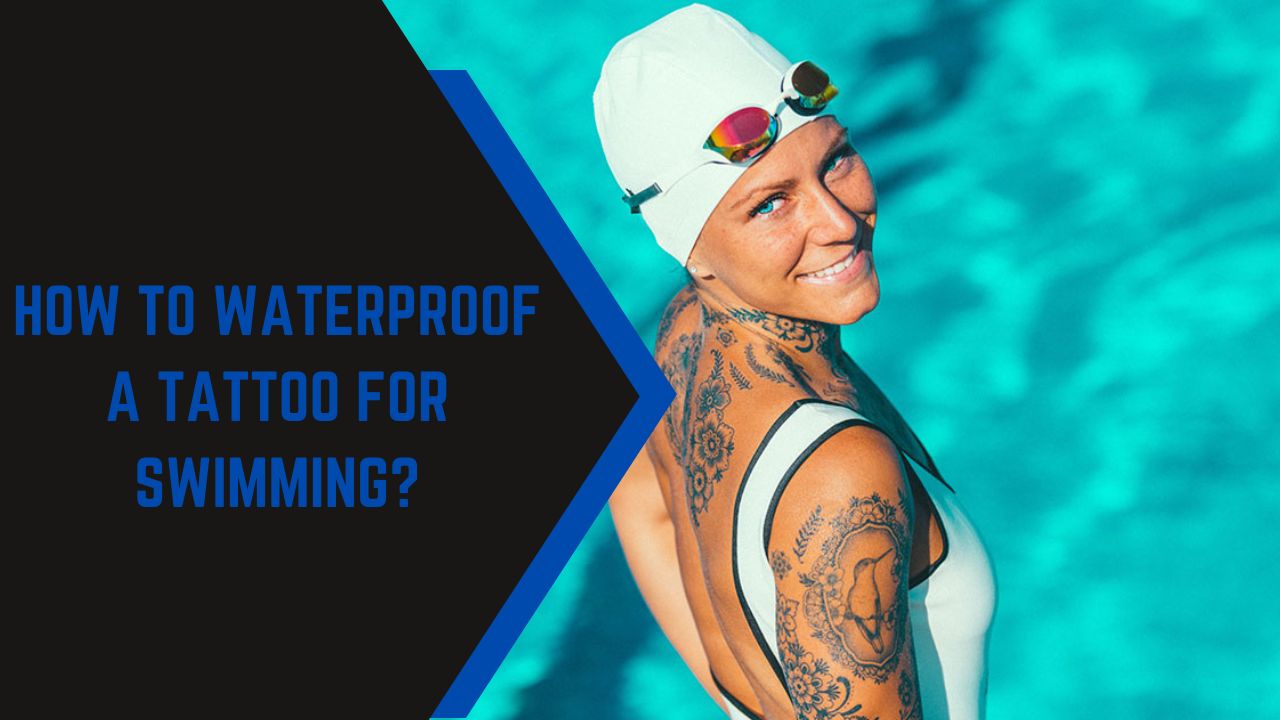Summertime is the perfect time to get a new tattoo! What’s cooler than displaying your new tattoo at the beach or pool? When you get a tattoo, your artist will go over aftercare instructions. These will usually include keeping the tattoo clean and dry for a certain period, typically around two weeks. After that, you can start to reintroduce activities like swimming slowly. Unfortunately, if your tattoo isn’t waterproofed properly, it can start to fade and even peel off in the water. Moreover, water can also cause the skin to swell and distort the tattoo. So, it’s important to discuss how to waterproof a tattoo for swimming?
So, if you’re planning on hitting the waves or taking a dip this summer, be sure to take steps to waterproof your tattoo first. This blog post will help you how to waterproof your tattoo for swimming to enjoy your summer without worrying about your tattoo ink. Whether the following methods you choose waterproofing your tattoo before swimming is crucial to maintaining its appearance.
Methods To Waterproof Tattoos For Swimming:
Waterproofing the tattoo for swimming is easy and ensures proper healing if you know how to do it properly. But don’t panic if you don’t know; the following are a few easy methods and applicable steps on how to waterproof a tattoo for swimming:
Using a water proof tattoo cover
One of the best tips to waterproof your tattoo is using a waterproof cover to protect your tattoo when you are ready to swim. These covers are typically latex or silicone and fit snugly over your tattoo. They create a barrier between water and your skin, which helps to preserve the tattoo and keep it from fading. Waterproof tattoo covers are also helpful for keeping your tattoo clean while swimming, as they prevent bacteria and other germs from sticking onto the ink. If you are planning to spend a lot of time in the water, investing in a good quality cover is essential for maintaining the integrity of your tattoo.
Applying a saniderm over your tattoo
First, let your tattoo completely heal before diving into the pool. Once it is healed, apply a clear waterproof saniderm over the tattoo. You can find these saniderm at most drugstores or online. Follow the instructions on the packing of the saniderm, then apply a thorough and even layer. Once the saniderm is balanced on skin, it will protect your tattoo against water and intense UV light.
Wearing swimwear that covers your tattoo
Preferably wear swimwear that covers your tattoo to help protect it from the sun and any chlorine or salt water that may contact it. Second, avoid submerging your tattoo in water for extended periods. Finally, if your tattoo gets wet, then dry it off immediately.
Avoiding chlorinated water
If you’re not careful, swimming can also ruin your tattoos. The chlorine in water can cause the colors to fade, and the lines to blur, and salt water can dry out the skin and result in severe infection. So, you must avoid chlorinated water as much as possible. If you must swim in a pool, rinse off immediately afterward with clean water. Finally, apply a thick layer of lotion or balm to the tattooed area after swimming to lock in moisture and keep the skin healthy.
Related: Best Tattoo Transfer Paper (Thermal and wax-based Sheet) 2024
Keeping your tattoo clean and dry
The best way to keep your tattoo clean and dry is to apply a thin layer of petroleum jelly or lotion before getting in the water. It will create a barrier between the skin and the water to prevent the tattoo from getting wet. After swimming, thoroughly clean the tattooed area with soap and water. Give a gentle pat dry with a clean towel, and then apply another layer of petroleum jelly or lotion.
Wrong Ways to Waterproof a Tattoo for Swimming
Knowing how to waterproof a tattoo benefits you when you swim or bathe in a sauna. But having guidance about the wrong ways to waterproof a tattoo for swimming is more important because it protects against infection and swollen tattoos afterward. Following are some things that would help you immensely in Thai regard and let you enjoy a delighted swimming experience even with a healing tattoo:
Plastic Coverings
Using a traditional plastic covering instead of a saniderm is the number one thing you should avoid for swimming. This is because plastic covering using air tights the tattoo while refraining from proper breathability. This would cease the tattoo from being overly pressurized and increase the risk of bacterial infection on the skin in such damp conditions.
Waterproof Sprays
Waterproof sprays are not intended to be used on human skin, healing wounds, or tattoos. Certain chemicals in waterproof sprays can damage the healing skin and result in infection. Moreover, it also increases the risk of infection and swollen tattoos after swimming.
Sunscreen
Believe us when we say that people think using sunscreen on a healing tattoo is enough to protect it during swimming. However, sunscreen and other related products help moisturize skin and protect it from harmful sun rays and UV light. However, using sunscreen for waterproofing a tattoo for swimming is not a good idea.
Swimming Tattoo Ideas:




Importance Of Waterproofing Tattoo For Swimming:
Understanding how important waterproofing a tattoo is is crucial before you take it into swimming waters. This is an actual differing factor among people who get infections after swimming with tattoos. Professionals and people know about tattoo aftercare to ensure water resistance on their healing tattoos. If you don’t cover your tattoo and start swimming, the water interacts with the tattoo, creating moisture build-up in the healing surface of the tattoo.
We all know that our skin requires a proper environment with suitable nutrition and optimum moisture level to heal. Unfortunately, moisture build-up extends the water level in the healing skin and causes damn texture. Ultimately, this leads to severe infection on the healing tattoo skin. So it’s better to waterproof a tattoo for swimming properly.
Frequently Asked Questions:
The best way to waterproof a tattoo for swimming is to apply a layer of petroleum jelly or a waterproof ointment to the tattoo and then apply a waterproof bandage or plastic wrap. This will help keep the tattoo from absorbing too much water while swimming.
Yes, applying a waterproof sunscreen with an SPF of at least 30 to the tattoo is important before going out in the sun. This will help protect the tattoo from the sun’s harmful UV rays. Additionally, make sure to reapply the sunscreen at least every two hours.
The best way to protect your tattoo from the sun is to apply sunscreen with an SPF of at least 30. Reapply it frequently, especially while swimming or when you are sweating. You should also avoid using sunscreen on a new tattoo, as this can cause the ink to fade.
Your tattoo will be fully healed when the ink has settled into the skin, and the scabs have fallen off. Typically 2-4 weeks are required. Once your tattoo is healed, you can apply a clear waterproof sealant over it to protect it from the water.
Conclusion
Now, by reading all the methods above, you have a clear idea of How to Waterproof a Tattoo for Swimming? Using a waterproof tattoo cover, applying a clear waterproof sealant over your tattoo, wearing swimwear that covers your tattoo, avoiding chlorinated water, and applying sunscreen to your tattoo, you can keep your ink looking sharp while swimming or playing in the sun. Then, after each swim or ocean dip, clean and dry your tattoos. Thanks for reading.

Leave a Reply